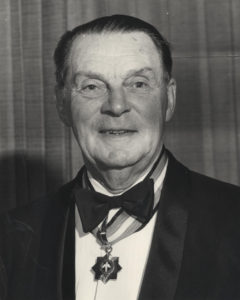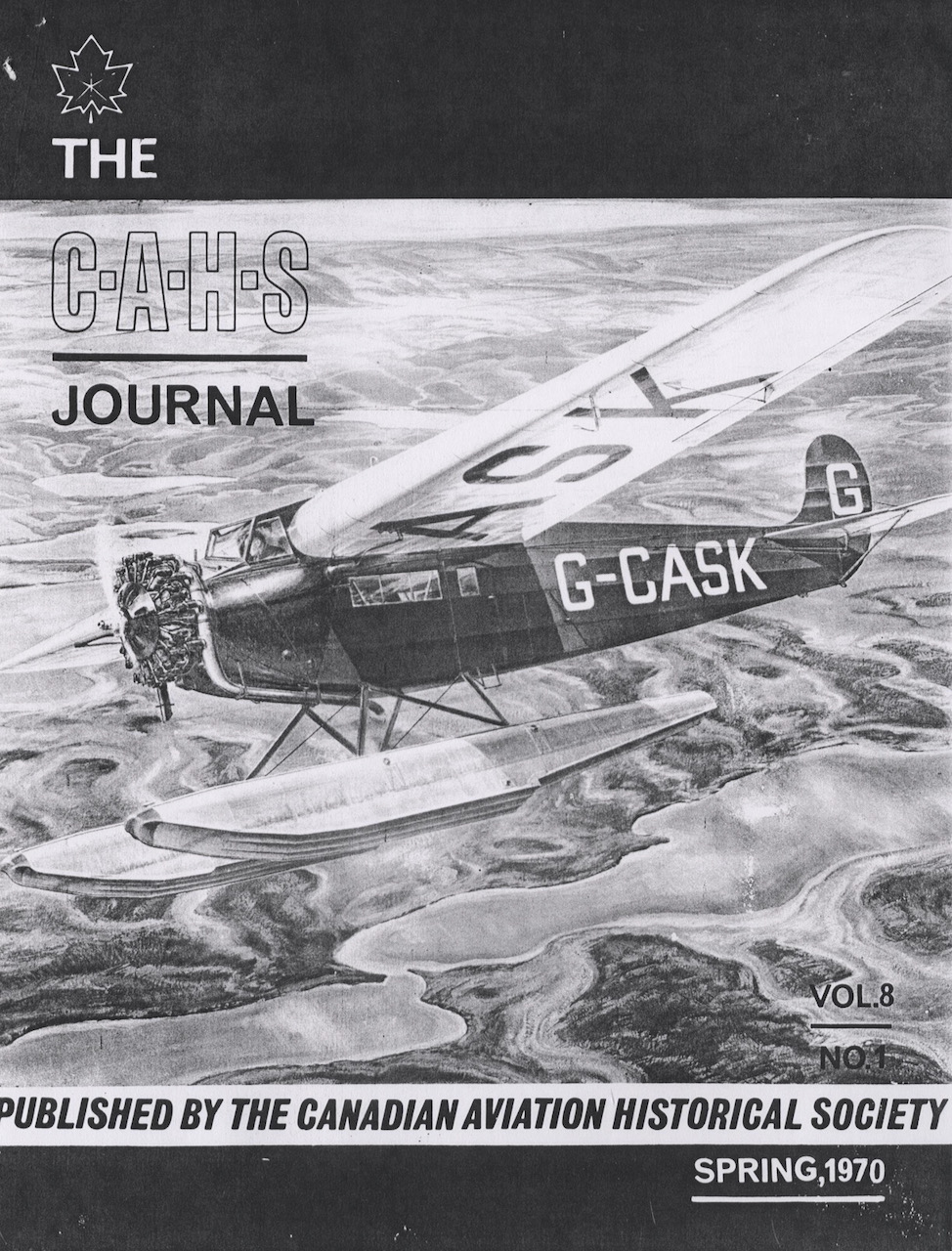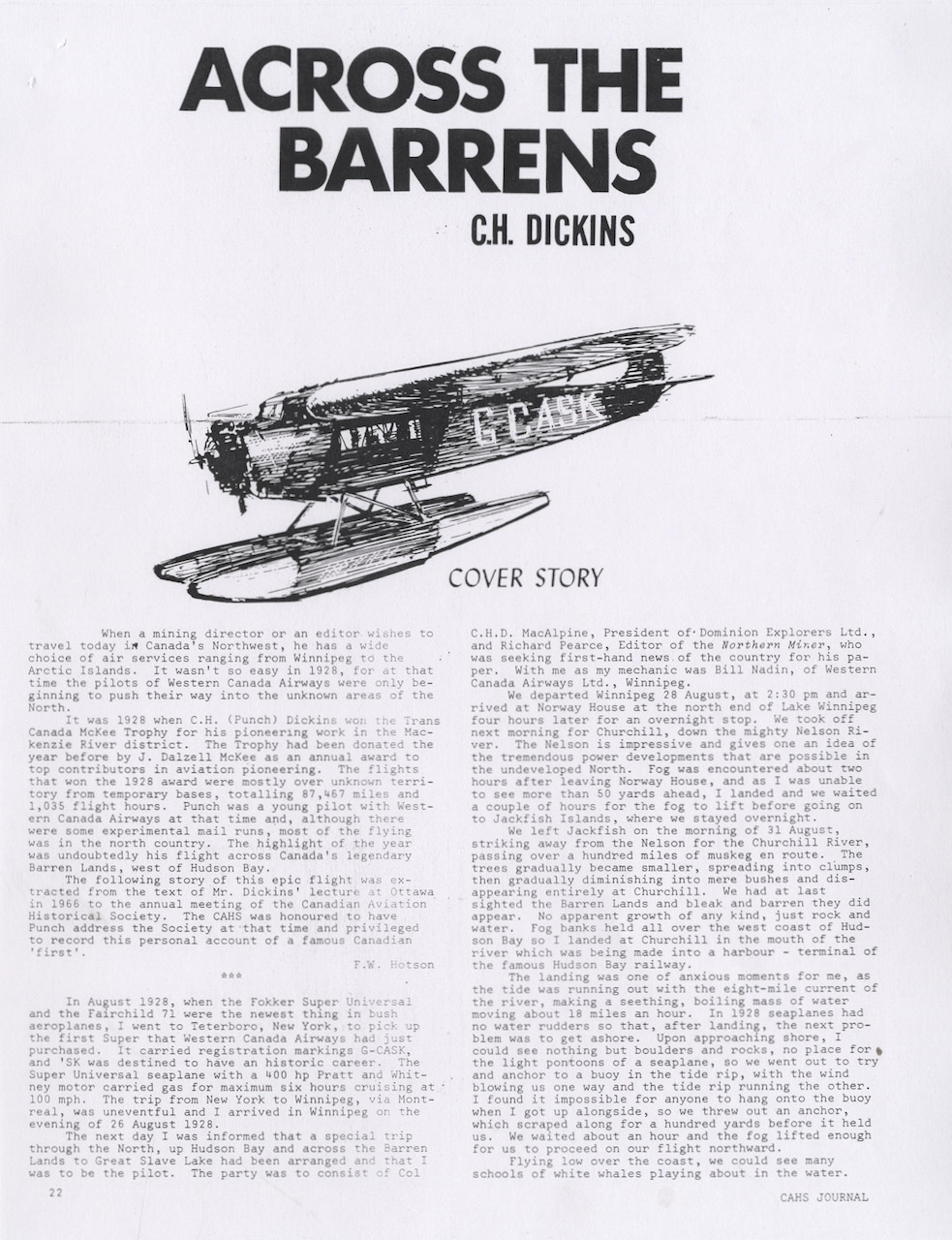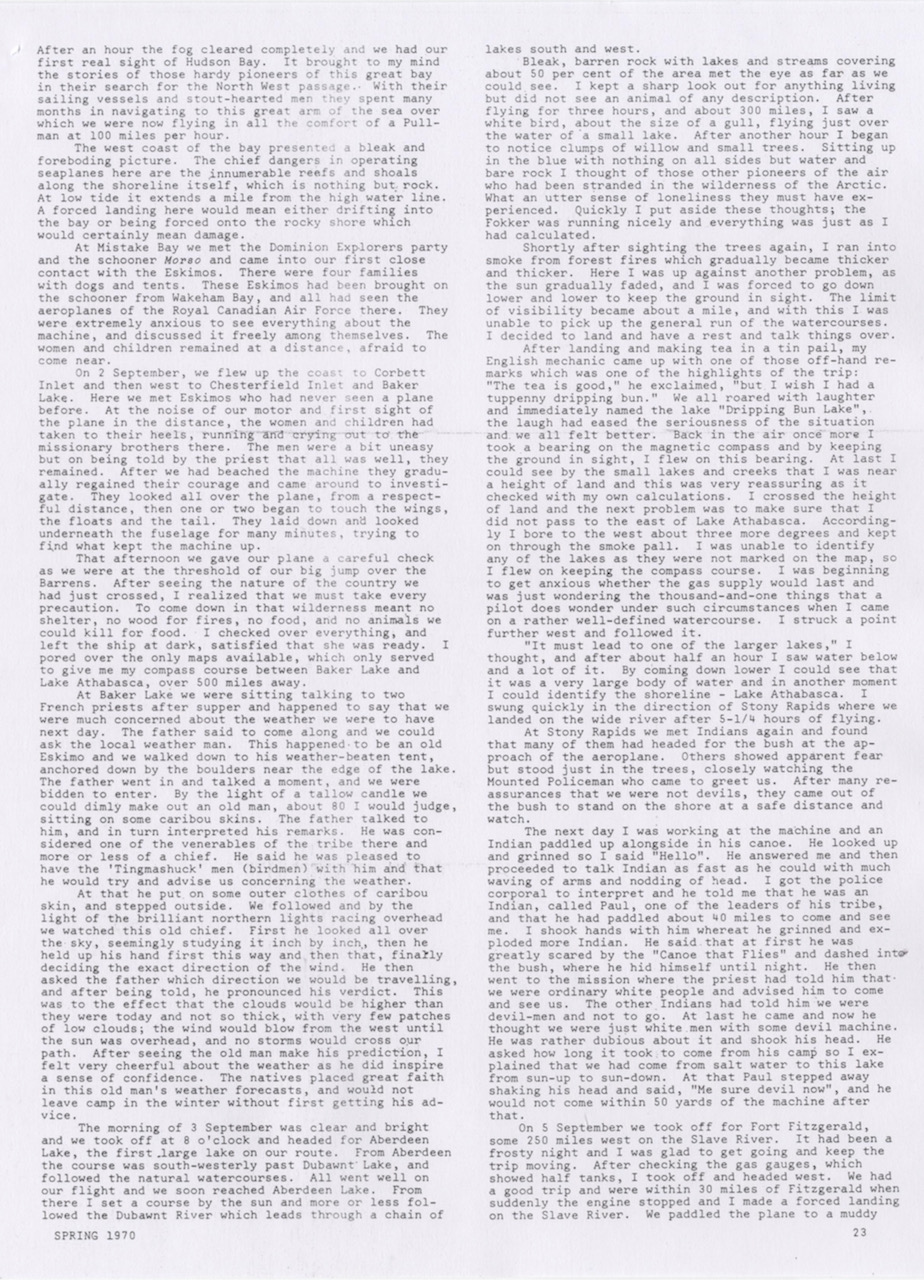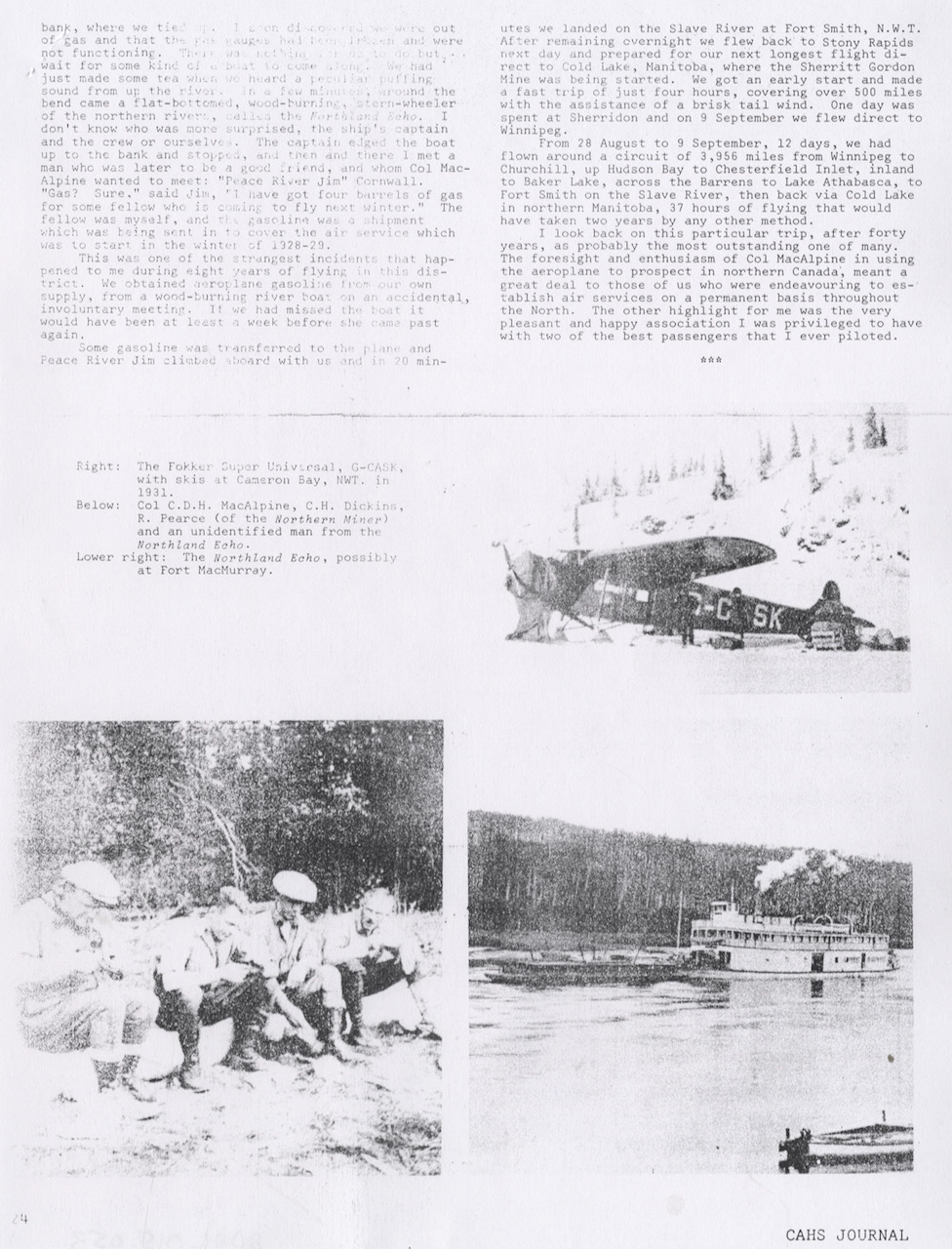Clennell Haggerston Dickins
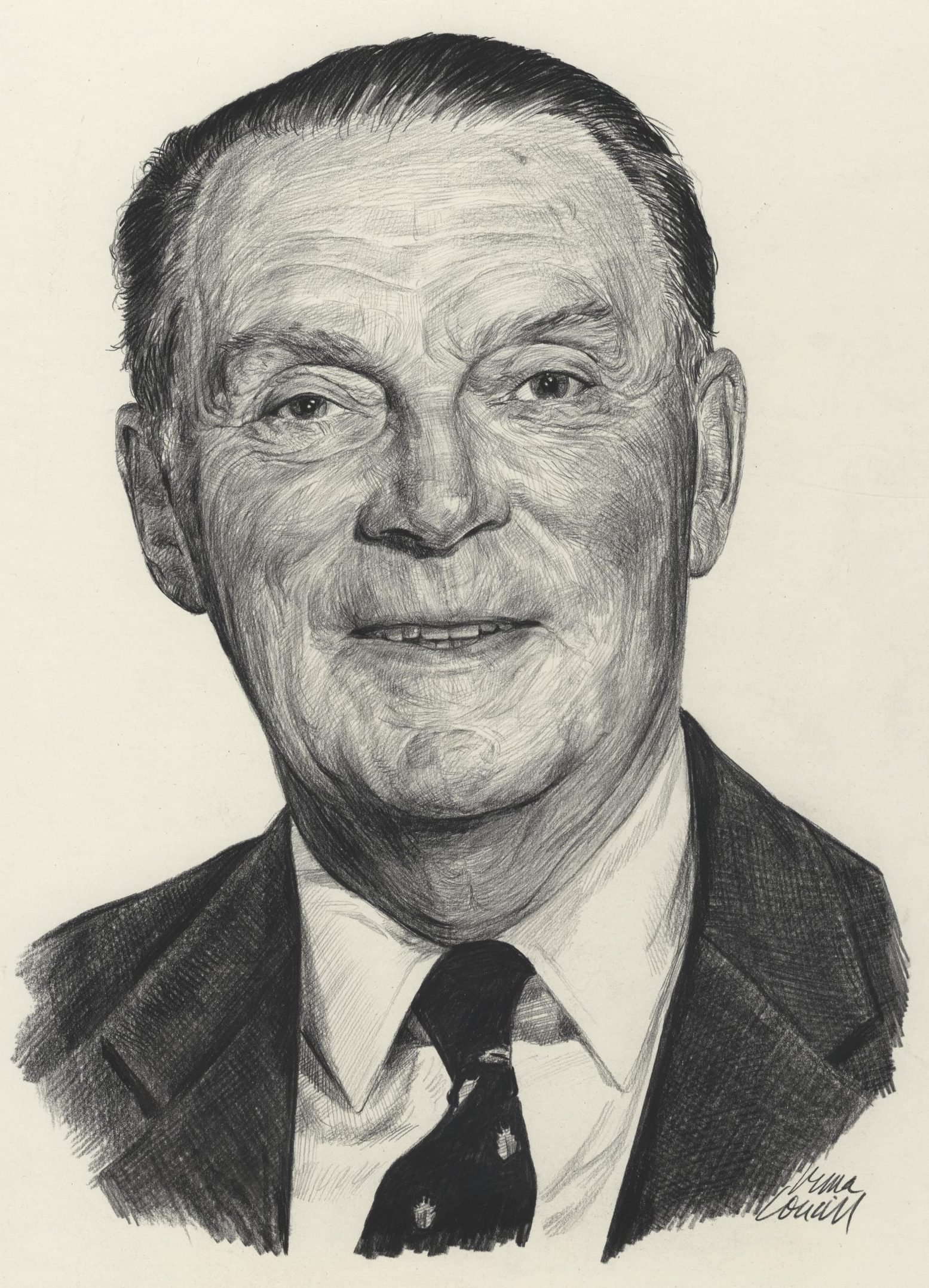
Nickname: Punch
Birthday: January 12, 1899
Birthplace: Portage la Prairie, Manitoba
Death Date: August 3, 1995
Year Inducted: 1974
Awards: OC; OBE; DFC; The McKee Trophy; LLD (Hon)
Despite adversity, he demonstrated to the world the value of the bush plane, and his total contribution to the brilliance of Canada's air age can be measured not only by the regard in which he is held by his peers, but by the nation as a whole
The Beginning of the RCAF
Clennell Haggerston (Punch) Dickins, OC, OBE, DFC, LL.D.(Hon), was born in Portage la Prairie, Manitoba on January 12, 1899. His family moved to Edmonton, Alberta, in 1907. He attended the University of Alberta until enlistment in the Canadian Infantry in World War I. In 1917 he transferred to the Royal Flying Corps (RFC), earned his pilot's wings and a commission and was posted to 211 Squadron where he served until 1919. He was awarded the Distinguished Flying Cross (DFC) for persistence and gallantry in completing aerial assignments under fire.
At war's end Dickins returned to Canada, joined the Canadian Air Force (CAF) and then became one of the original officers of the Royal Canadian Air Force (RCAF) when it was formed in 1924. He conducted cold weather, high altitude experiments in the Siskin fighter aircraft at Edmonton for two years, proving that cold-weather flying was possible. He flew forest patrol duties and completed special aerial photographic survey flights in Alberta and Saskatchewan. He left the RCAF in 1927.
Airmail Service
He joined newly formed Western Canada Airways Ltd. (WCA) in 1927 and began a career which added up an impressive number of aviation firsts. Collectively, these helped unlock the secrets of Canada's north.
In November 1928, Western Canada Airways, formed in December 1926 by James A. Richardson of Winnipeg, won the contract to carry mail on the prairie circuit of Winnipeg, Regina, Calgary, Edmonton, Saskatoon, and back to Winnipeg. Dickins made the first airmail flight in a Fokker Super Universal. It was successful and within a few months, airmail service became a regular feature in these areas.
A Daring Flight
In August 1928, Western Canada Airways was contracted by Dominion Explorers Limited to fly their President, Charles MacAlpine, on an exploratory flight to visit prospective mining sites across Canada's unmapped Barren Lands of the Northwest Territories. Dickins was selected to fly the group in a new Fokker Super Universal float plane, G-CASK. The expedition's route was from Winnipeg through Fort Churchill, up the west coast of Hudson Bay to Chesterfield Inlet, inland to Baker Lake, southwest to Stony Rapids, and return to Winnipeg, covering some 4,000 miles (6,400 km). Dickins described the many difficulties of navigating over this desolate area. First of all, the only map available to him had the word "unexplored" printed across much of the area. While he expected to pick out large lakes and main rivers, as time went on all he could see were lakes and bare rock with little vegetation. There was no radio communication beyond Fort Churchill, and from there on, they were completely out of radio contact. He flew by the sun most of the way because his compass, affected by magnetic interference, went round in circles in several places and couldn't be trusted. A result of the twelve day trip was that large areas of the region were mapped. Dickins was awarded the Trans-Canada (McKee) Trophy for 1928 because of his outstanding contribution to Canadian aviation made during this trip.
A New First
Early in 1929, Dickins flew to Fort Good Hope on the Mackenzie River to explore the possibility of an air mail route to the Arctic Coast and to collect furs on the first aerial shipment to traders in Winnipeg. In July 1929, Dickins became the first pilot to fly the full length of the Mackenzie River, some 2,000 miles (3,200 km) in two days, from Edmonton to Aklavik on the Arctic Ocean. On this trip he became the first pilot to cross the Arctic Circle. In September he flew the first prospectors into Great Bear Lake where pitchblende was discovered.
A Daring Rescue
Dickins felt both the agony of defeat and the thrill of success in dangerous searches for lost companions. In late September 1929, word was received that the MacAlpine party, which had been flown north for some serious prospecting, was overdue and possibly lost. Dickins and engineer W.S. Tall made three searches over an area of the North West Territories for two weeks, without incident, but to no avail. The total search took place over ten weeks and involved nine aircraft, before the party was found at Cambridge Bay and flown out to Winnipeg on December 8, 1929.
Canadian Airways Ltd
Western Canada Airways was taken over by Canadian Airways Ltd. in November 1930. Dickins was named Superintendent of the Mackenzie River district for the new company, which was based in Edmonton. In recognition of his outstanding aerial work in the development and expansion of flying routes in northwestern Canada, Dickins was named an Officer of the Order of the British Empire (O.B.E.) in 1936. That same year he was appointed General Superintendent of Canadian Airways at Winnipeg and completed an historic 10,000 mile (16,000 km) air survey flight of northern Canada.
Canadian Pacific Railways
Canadian Pacific Railways named Dickins assistant to the President in 1941, then appointed him operations manager of the wartime Atlantic Ferry Service which had the responsibility of delivering by air up to 150 aircraft per month across the North Atlantic to the United Kingdom. In 1942 this operationally successful service was then handed over to the RCAF Ferry Command.
Dickins' unequaled grasp of northern Canadian aviation, with its diverse problems, resulted in his appointment in 1942 as Vice-President and General Manager of Canadian Pacific Airlines (CPA). His task was to amalgamate several small, scattered airlines into one cohesive, air transportation network serving western Canada. During this same period he was to oversee the management of six of the many British Commonwealth Air Training Plan (BCATP) schools, which trained approximately 130,000 air crew for the Allied air offensive.
deHavilland Aircraft
In 1947 Dickins joined de Havilland Aircraft at Toronto, Ontario, as a Director and Vice-President. The company had just unveiled a new design called the 'Beaver', an aircraft that would revolutionize bush flying. During the following two decades he developed a world wide sales organization, second to none in the aviation industry, which sold Canadian designed and built aircraft in over 60 countries.
Awards and Recognition
Dickins retired from professional flying in 1966 after 45 years in the business and more than one million miles across the uncharted north, often in weather unforgiving of human error. In 1968 he was appointed an Officer of the Order of Canada (OC) for his over-all services to the nation in introducing the air age to northwestern Canada. His legendary exploits as a Canadian air pioneer were recognized by the University of Western Ontario and the University of Alberta which conferred upon him Honorary Doctor of Laws Degrees.
Dickins played a major role in establishing Canada's Aviation Hall of Fame in 1973. He was elected by his peers to become the first Chairman of the Board of this prestigious organization. Dickins died at the age of 96 in Toronto, on August 3, 1995.
In 2004 NASA's Mars Exploration Rover Project Scientist Dr. John Grotzinger named a rock in Endurance Crater as "Punch Dickins Rock" to commemorate his flying a Geologist into the N.W.T.
Throughout his life, Punch Dickins was proud to call himself a 'Bush Pilot'. He was also called one of the most outstanding Canadians in this nation's first century, and was christened by native groups 'The Snow Eagle' and 'Canada's Sky Explorer'.
Clennell Haggerston (Punch) Dickins was inducted as a Member of Canada's Aviation Hall of Fame in 1974 at a ceremony held in Edmonton, Alberta.
News Stories
To return to the Inductee Page, please click here.

